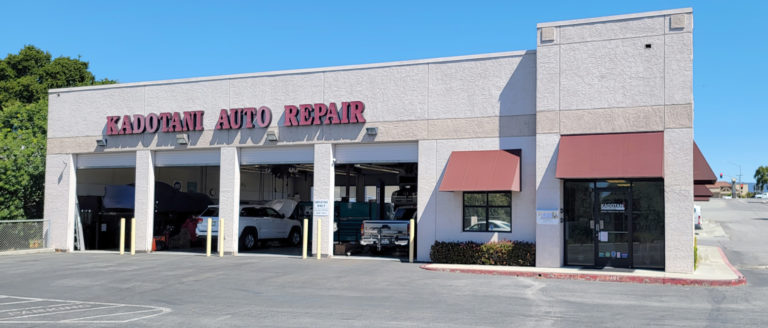
Five Reasons Why Your Check Engine Light Might Come On
Table of Contents
Your vehicle’s “check engine” light is designed to warn you of a potential problem. The best approach is to schedule an appointment with a licensed mechanic as soon as possible. With the use of advanced diagnostic equipment, they can quickly track down the source of your trouble. Let’s look at the five most common reasons why your check engine light might come on.
1. Spark Plugs Have Worn Out
It’s only a matter of time before you’ll need to have your spark plugs replaced. While some of today’s spark plugs are rated to last up to 100,000 miles, the life expectancy can vary significantly from one model to the next. Expect to notice some obvious performance issues as your spark plugs begin to burn out. Rough idling, hesitation, and hard starting indicate lousy spark plugs.
Your vehicle’s onboard computer can tell when the spark plugs aren’t performing well. Multiple engine misfires will eventually trigger the check engine light. Take your time with a repair shop for a tune-up. Your gas mileage will take a big hit, and you risk damaging the engine. While your vehicle is at the shop, the service technicians will also check the condition of the spark plug wires. Over time, hot engine temperatures can cause the insulation on the cables to break down.
2. Loose Gas Cap
It’s easy to forget to tighten your gas cap. This is especially true when you’re rushing to get somewhere. If the check engine light has turned on after refuelling, there’s a good chance your gas cap is loose.
While a loose gas cap may not seem like a big problem, it can be more severe than you think. The gas cap is a critical part of your vehicle’s evaporative emission system. When the gas cap is loose or missing, fumes are released into the atmosphere, which definitely contributes to environmental pollution. It would be best if you also considered the fact that you’re wasting gas.
If your gas cap isn’t correctly sealing, it may be time to purchase a new one. Luckily, replacements are not expensive. After installing the new gas cap, your check engine light should turn off within a few minutes of driving.
3. Catalytic Converter Has Failed
Every vehicle is required by law to have at least one catalytic converter. The purpose of this component is to reduce harmful exhaust emissions. It features a honeycomb-structured ceramic material, which helps capture certain toxins.
On average, you can expect a catalytic converter to last at least ten years. However, poor vehicle maintenance often causes it to wear out much sooner than expected. For instance, worn spark plugs can cause raw fuel to collect inside the catalytic converter. Oil leaks can be just as problematic.
If your catalytic converter isn’t working, the check engine light will be activated. A bad catalytic converter can also lead to a loss of power. The internal material can start to break apart, causing an excessive amount of exhaust pressure. In severe cases, your engine will stall.
Remember, a worn catalytic converter will ultimately cause your vehicle to fail its smog test. While new catalytic converters can be expensive, they come with a confidence-inspiring warranty.
4. Vacuum Hose Leaking
A leaky vacuum hose can cause the check engine light to come on. These lines help the engine to run smoother by lowering the amount of internal pressure. However, it’s not uncommon for vacuum hoses to spring a leak. High heat, gunk, and other factors can cause them to crack.
When a vacuum hose has broken, it allows unmetered air to enter the engine. You’ll experience many of the same symptoms that stem from worn spark plugs, including rough engine vibrations and backfiring. To fix the issue, your mechanic must replace the damaged vacuum line.
To prevent problems from occurring, it’s a good idea to have your vacuum lines regularly inspected for signs of wear. Getting the hose ahead of time can save you a lot of extra stress.
5. An O2 Sensor Has Failed
Every vehicle has at least two oxygen sensors. Monitoring the amount of unburned oxygen in the exhaust system, they help the computer maintain the correct fuel mixture. Too much fuel causes the engine to run rich, while too little fuel leads to a lean-running engine.
Although oxygen sensors are pretty durable, harsh conditions cause them to deteriorate gradually. A failing oxygen sensor will activate your vehicle’s check engine light. Issues, such as engine skipping and poor fuel economy, may also occur. Some people may suggest cleaning your oxygen sensors. However, there are more effective solutions. The best approach is to have them replaced by a certified mechanic.
Contact Kadotani Auto Repair in Watsonville. We can determine why your check engine light is on.


